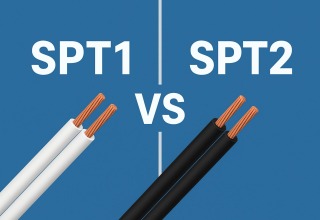Effective internal linking is a powerful tool for driving traffic and enhancing SEO, particularly for product pages. By strategically linking relevant pages, you can guide visitors through your site while signaling the importance of specific content to search engines. For businesses that invest in ecommerce PPC management services, strong internal linking complements paid strategies, ensuring a seamless user journey and maximizing visibility.
The Importance of Internal Links for SEO
Internal linking is a crucial aspect of search engine optimization (SEO) that can significantly impact your website’s visibility and user experience. By strategically connecting your web pages, you create a network of information that search engines can easily crawl and understand.
Enhancing Site Structure and Navigation
Internal links help establish a clear hierarchy within your website, making navigating your content easier for users and search engines. This improved structure can improve page indexing, potentially boosting your search rankings.
Distributing Page Authority
When you link to other pages on your site, you’re essentially sharing the SEO value of the linking page. This “link juice” distribution can help elevate the visibility of lesser-known pages, especially when linking from high-authority pages.
How to Structure Internal Links on Product Pages
Create a Logical Hierarchy
Establish a clear hierarchy when structuring internal links on product pages, says Yoast. Begin with your main category pages, link to subcategories, and individual product pages. This pyramid structure helps search engines understand the relationship between your pages and improves user navigation.
Optimize for User Intent
When placing internal links, consider the customer journey. Anticipate what information or products a visitor might seek and provide relevant links accordingly. This user-centric approach improves engagement and aligns with search engine algorithms prioritizing user experience.
Best Practices for Internal Linking to Product Pages
Strategic Anchor Text
Use descriptive and relevant anchor text to create internal product page links. This helps search engines understand the context of the linked page. For example, instead of using generic phrases like “click here,” opt for specific product names or key features. This practice improves your SEO and enhances user experience by setting clear expectations for what they’ll find when clicking the link.
Contextual Relevance
Ensure that the content surrounding your internal links is contextually relevant to the product pages you’re linking to. This relevance signals search engines that the linked pages are valuable and topically related.
Balanced Link Distribution
Distribute internal links evenly across your site, avoiding over-linking to certain pages. While it’s important to highlight key products, a balanced approach ensures that link equity is shared across your site.
Driving Traffic with Cross-linking Between Products
Cross-linking between products is a powerful strategy for boosting your ecommerce PPC management efforts and driving more traffic to your product pages, according to Shopify. By strategically connecting related items, you create a web of internal links that enhances user experience and improves your site’s SEO performance.
Identifying Complementary Products
Start by analyzing your product catalog to find natural connections between items. Look for products frequently purchased together or complement each other in functionality. For example, if you sell smartphones, link to compatible cases, chargers, and screen protectors.
Implementing Contextual Links
Incorporate links within product descriptions, specifications, or dedicated “related products” sections. Use descriptive anchor text that accurately reflects the linked product, which helps users and search engines understand the connection’s relevance.
Leveraging Category Pages
Don’t limit cross-linking to individual product pages. Utilize category pages to create broader connections between product groups. You can also seek ecommerce PPC management services from trusted professionals to help improve your site’s overall structure and navigability.
Monitoring and Optimizing
Analyze the performance of your internal links regularly using analytics tools. Pay attention to click-through rates and conversion data to identify the most effective cross-links. Use this information to refine your linking strategy and maximize its impact on traffic and sales.
Final Thoughts
Implementing a strategic internal linking strategy on your product pages can significantly enhance your e-commerce site’s SEO performance and user experience. Remember to prioritize relevance, use descriptive anchor text, and maintain a natural link density. With consistent effort and attention to detail, internal linking can become a powerful tool in your SEO arsenal, driving sustainable growth for your online business. Start optimizing your product pages today and watch your site’s performance soar.






















